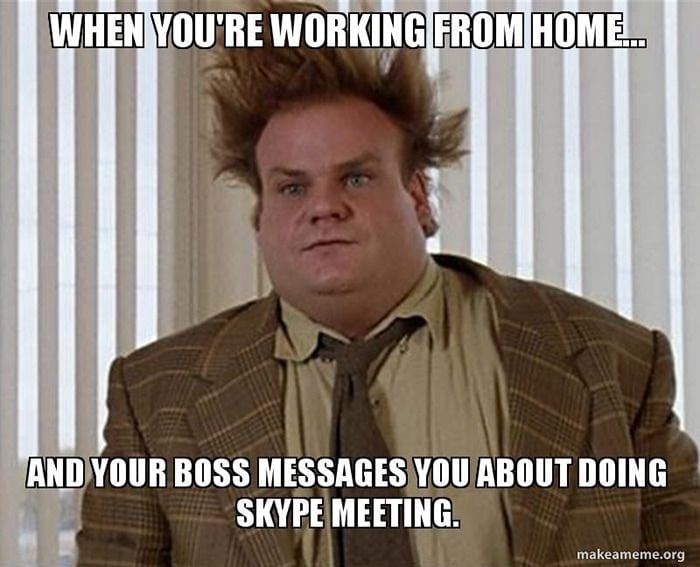Microsoft’s latest Teams update has sparked a fresh round of workplace jitters.
The platform is introducing a location-tracking feature that automatically logs where you’re working – whether that’s the office, the couch, or your favourite café with half-decent Wi-Fi.
According to Microsoft’s 365 roadmap, the update uses company Wi-Fi to pinpoint your work location and share it with your organisation. Officially, it’s meant to “reduce confusion” about who’s in the building. Unofficially, it’s raising eyebrows about just how much your boss can (or should) know.
So, what does this mean for your right to privacy – and can employers legally use this data to monitor staff?
Mediaweek sat down with legal expert and partner at Dowson Turco Lawyers, Nicholas Stewart, to learn exactly what’s allowed, and how workers can protect themselves as digital oversight creeps closer to home.

Legal expert Nicholas Stewart, who is a partner at Dowson Turco Lawyers
MW: Can my boss legally track where I’m working without asking me first? (Would my consent be required before this feature is turned on?)
NS: Generally, employers should seek employee consent before undertaking workplace surveillance. In NSW, section 10 of the Workplace Surveillance Act 2005 states that surveillance of an employee must not commence without prior written notice.
In Victoria, a recent inquiry highlighted the urgent need for modernised laws to address technology-driven workplaces. Current Victorian laws do not adequately regulate sophisticated employee monitoring technologies or data analytics, whereas NSW legislation goes much further. Queensland, meanwhile, is known for various loopholes that effectively greenlight surveillance.
From a non-legal but best-practice perspective, employers should always seek employee consent before implementing workplace surveillance.
MW: Does this new Teams update mean my employer can see every time I log in from home or a café – and store that data somewhere?
The new feature will allow Teams to “automatically configure a user’s work location to match the building they are in” once they connect to office Wi-Fi. Employees required to use Teams at work will not be “located” when working from home or a café.
In other words, Teams won’t automatically detect an employee’s location unless the administrator has mapped those networks. This functionality can also be switched off or limited to certain hours (for example, nine to five).
MW: If I’m automatically “tagged” at the office when I connect to Wi-Fi, does that count as workplace surveillance under Australian law?
NS: This circles back to the first question: Australia’s states and territories each have their own surveillance laws. In NSW, under the Workplace Surveillance Act 2005, this functionality would likely qualify as workplace surveillance.
The Act defines surveillance as including camera surveillance of activities, computer surveillance (through software that monitors or records computer use), and tracking surveillance (using an electronic device that records geographical location or movement). In NSW, employees must be notified before any surveillance begins.

MW: How long can my employer legally keep my location data, and what stops them from using it for something else – like checking if I’m really sick or out of office?
Data storage is a complex issue in Australia and globally. At a federal level, the Privacy Act 1988 (Cth) regulates how most businesses handle data. It requires entities to take reasonable steps to protect personal information from misuse, interference, loss or unauthorised access, and to destroy or de-identify information once it’s no longer needed – subject to some exceptions.
Employers should carefully consider what data they collect, why, and for how long. In practice, many will retain it for the duration of employment and possibly for several years afterward, particularly if it could be relevant to future legal or regulatory proceedings.
MW: Could this kind of tracking be used in performance reviews or HR investigations, and would that be considered fair or lawful?
Yes, it’s likely this kind of data could be used in performance reviews or investigations. For instance, location data may help verify timelines or claims made by employees.
My firm recently advised an employer who terminated an employee for failing to disclose that they were working remotely from the opposite side of the country while claiming to be working from home. Teams’ location tracking could have been useful in that situation, though whether it would have been lawful depends on the state.
In NSW, for example, using Teams’ location data would be considered lawful and fair – provided the employer had notified the employee before the surveillance began.

MW: What can I do if I don’t want my location automatically shared – can I opt out or disable it without getting into trouble?
In most cases, employees won’t be able to disable the feature themselves. Employers operating in jurisdictions that permit this type of computer surveillance will typically notify staff and use the data for business purposes.
Workers should discuss any concerns with their employee representatives, unions, or HR teams to negotiate terms around workplace surveillance and data use.
MW: If my employer’s based overseas or uses a global Microsoft account, does my data stay in Australia or could it be stored somewhere else?
Microsoft states that Teams data “resides in the geographic region associated with your Microsoft 365 or Office 365 organisation” and that it “currently supports the Australia regions.”
However, employees in large multinationals should check where their Teams data is actually stored, as there’s always a chance it could be hosted overseas.
MW: Does this feature blur the line between my personal and professional life – especially if I’m working hybrid or using my own device?
We’re entering an era where everything is tracked. Walk through Sydney, Melbourne or Brisbane and you’ll see cameras on every corner, outside every government building, café and gym. We are living in the age of surveillance, and this is simply the next iteration.
That said, location data can sometimes work in employees’ favour – helping them prove productivity, meet KPIs, or even secure bonuses. It may also improve workplace safety.

MW: What are the biggest red flags workers should look out for when employers roll out tools like this – and how can we protect our privacy at work?
Red flags include a lack of transparency around how surveillance technology works and what it’s used for. Workers should insist on open conversations about monitoring, especially when it involves personal devices or hybrid work.
Privacy protection starts with communication – discuss expectations with HR, management, or union representatives. These conversations should happen during recruitment or onboarding, and continue throughout employment as technology evolves.
Disclaimer: This information is general legal information, not legal advice. Each case falls on its particular facts. It is important to seek legal advice based on your own situation or circumstances.
